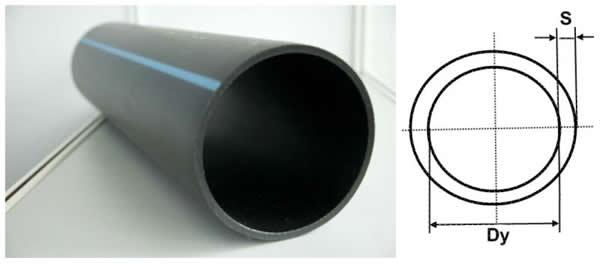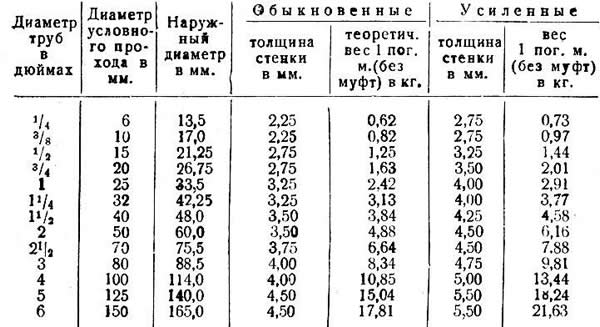Many of us have to deal with the need to replace water pipes. You can solve this issue yourself or with the help of a professional master. When replacing a pipeline, it is important to understand what diameter of pipes for a water supply system is optimal from a technical point of view. There are a wide variety of pipes on the market today, which differ in material quality, size and diameter. Products of what diameter are suitable in one case or another, our article will tell.
Dimensional characteristics of pipes
Modern plumbing is a rather complex structure, an important element of which are pipes. The most popular are metal-plastic, steel and copper pipes. The main physical characteristics that determine the size of pipes for water supply are:
- The inner diameter is a single characteristic for the nodes and pipes of the plumbing system. The inner diameter must be the same for both the pipes to be connected and the fittings connecting them.
- Nominal diameter is a nominal value, measured in millimeters, used when installing water pipes.
- Wall thickness.
- Pipe length.

It is important to choose the right diameter of plastic pipes for the water supply, otherwise you may encounter constant noise and problems in the water supply. This is due to flow turbulence, a process that results from the use of small diameter pipes.
Relationship of characteristics
How does the length of the water pipe affect the diameter of the pipes
The average flow velocity in a standard water pipeline is 0.02 km/s. This indicator affects the selection of pipe diameters. How to calculate the diameter of a water pipe, taking into account the length of this communication:
- If the length of the system is less than 30 meters, you should pay attention to pipes with a diameter of 25mm.
- If the length of the system is more than 30 meters, the use of pipes with a diameter of 32 mm is considered relevant.
- If the length of the system is less than 10 meters, pipes with a diameter of 20 mm are perfect.
The standard length of domestic water pipes is 4 meters. But in practice, pipes up to 14-15 meters long can be used.
When choosing long products, special attention should be paid to the quality of fittings, couplings and other connections. They will ensure reliable and durable operation of the water supply system.

Why does the diameter of the pipes determine the throughput of the water supply
The diameter of the pipe determines an important characteristic - the throughput of the water supply. So, for example, pipes with a diameter of 25 mm can drive up to 30 liters of water within a minute. For a pipe of 32 mm, this figure increases to 50 liters.
It should be borne in mind that an ordinary faucet in the kitchen or bathroom can pass no more than 5 liters of water. Thus, the choice of pipe diameter directly depends on the flow of water resources.
The more points of water consumption, the larger the diameter of the pipes should be. Pipes for hot and cold water supply can be selected with the same diameter, but the wall thickness of the pipes for hot water should be an order of magnitude higher.
When deciding what diameter of the water pipe you need, pay close attention to the following parameters:
- Plumbing length.
- The number of expected joints.
- The number of turns.
- Water pressure in the system.

Complex technical calculations used by professionals make it possible to calculate the complex effect of these factors on the plumbing system. However, for premises in an apartment building, their use is hardly advisable.
Standard Solutions
As a general rule, pipes with a diameter of 10 or 15 mm are chosen for the water supply, while the diameter of the pipes for the riser should be 25 mm. When purchasing pipes of the specified diameter, be prepared for the fact that these products do not have jewelry accuracy. That is, a 10 mm pipe can actually have a diameter of 10-12 mm.
Difficult plumbing work involves the use of pipes of increased diameter. They are optimal for operating a system with numerous joints, turns and permanent changes in water pressure.
We summarize: when choosing the diameter of pipes for water supply, we pay attention to the following points:
- The more complex the design of the water supply system, the larger the diameter of the pipes.
- Hot water pipes require reinforced wall pipes.
- The higher the rate of water consumption, the larger the diameter of the pipes.


















